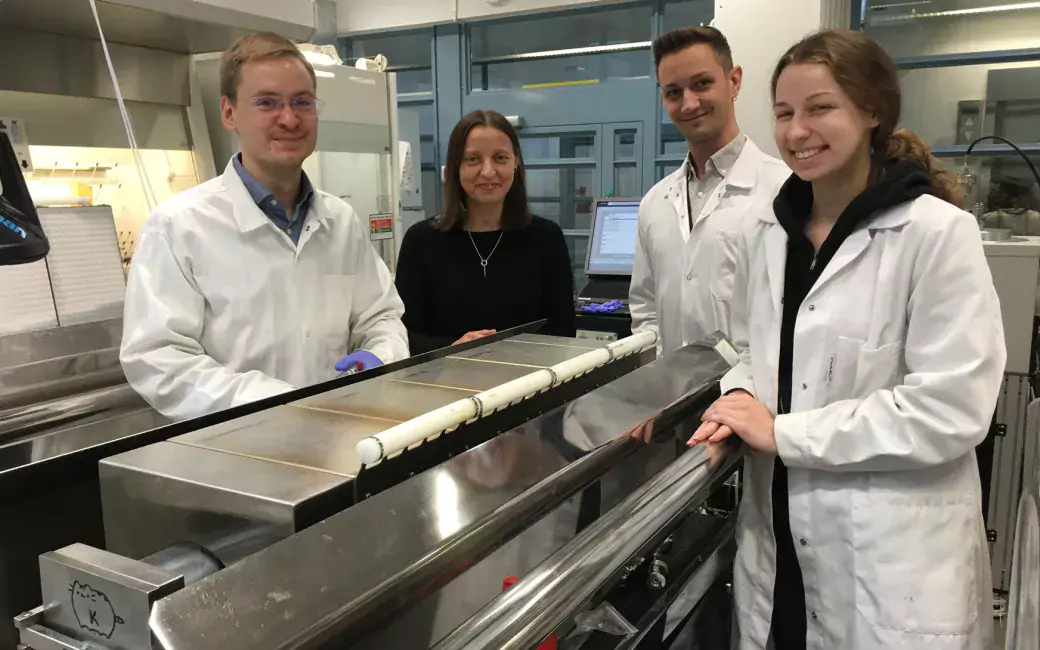Researchers at the University of Helsinki are developing thin films needed in new types of halide perovskite solar cells, and matching ALD processes, in order to provide increasingly affordable solar cells, enable their integration into objects and, consequently, promote the transition to renewable energy.

The 2022 Millennium Technology Prize has been awarded today October 25 to Scientia Professor Martin Green of the UNSW Sydney, Australia, for his innovation that has transformed the production of solar energy.
Most commercial solar cells are silicon-based, and apply PERC (Passivated Emitter and Rear Cell) technology originally launched in 1983 by Martin Green, a recently awarded Millennium Award. However, increasingly efficient, inexpensive and durable solar cells are being developed all over the world. Even in the case of silicon-based cells, a transition is underway to novel techniques, including the tunnel oxide passivated contacts (TOPCon) concept, where several layers of silicon and oxide are added to the cell.
Transparent and flexible solar cells
In addition to silicon, other solar cell technologies are being investigated. The most promising new technique is based on the use of halide perovskites as a light-absorbing material. The general chemical formula of halide perovskites is ABX₃, where A is an alkali metal or an amine, B is tin or lead, and X is a halide. The most commonly studied compound is methylammonium lead iodide CH₃NH₃PbI₃. Perovskite solar cells are on the verge of commercialisation, and some manufacturers believe they will be mainstream in a couple of decades.
"As these new types of solar cells can be transparent, they can be installed in, for example, windows. They are also flexible, which increases their uses," says Senior University Lecturer Marianna Kemell, who heads the research project funded by the Academy of Finland.
Even though halide perovskite solar cells have achieved high efficiency levels, problems with cell stability and the lack of industrial-scale production techniques have constituted bottlenecks impeding their widespread adoption.
A breakthrough with metal iodides
While pursuing a master's degree in chemistry, Doctoral Researcher Georgi Popov boldly chose halide perovskites and their atomic layer deposition (ALD) as the topic of his master's thesis. There were doubters, as prior research-based knowledge was scarce.
"We identified suitable chemicals and were able to design a reaction that enabled us to create a metal iodide coating through deposition for the first time. We were able to demonstrate that this can actually be done through atomic layer deposition. The first successful trial was carried out with lead iodide, which was then processed into CCH₃NH₃PbI₃ perovskite through a further reaction," Popov says. "The research article was published in the refereed Chemistry of Materials scholarly journal. Later on, we also developed ALD processes for caesium iodide and CsPbI₃ perovskite."
Coatings produced through atomic layer deposition are used in roughly 30% of silicon-based solar panels. The ALD group headed by Professor Mikko Ritala at the University of Helsinki has achieved promising results in terms of the technique's adaptability to perovskite solar cells. The advantage of coatings produced by atomic layer deposition is that they form a uniform and comprehensive layer even on rough surfaces.
"If at some point we start making tandem solar cells, which combine a silicon cell and a perovskite cell, we know how to make that perovskite. We are developing the recipes and the chemistry used to grow perovskite," Popov says.
While the work currently being carried out is basic research, developing recipes and experimenting with small surface areas, the technique is applicable to large-scale production.
"The current plants manufacturing solar cells in China and elsewhere are able to adjust their equipment to produce ALD-coated solar cells," says Popov.
The future of solar cells
More than 80% of solar cells are manufactured in China, where industrial-scale ALD devices are also produced. Wei-Min Li, PhD, an alum of the University of Helsinki's Department of Chemistry, works as the chief technology officer at Leadmicro, a leading Chinese manufacturer of ALD equipment. This connection gives the department a solid grasp on where the field is going. ALD equipment used to produce silicon-based solar panels can also be expanded to produce next-generation solar cell materials.
"We are developing the future technical solutions that will gradually replace and supplement current production. In the future, fewer resources will be needed for production, and, thanks to increasingly effective cells, less surface area as well. When solar cells can be installed on uneven surfaces in addition to even ones, we no longer need to build solar parks in fields, as fields are needed for other purposes," Popov notes.
However, Popov points out that we cannot afford to wait for new technical solutions, as the utilisation of renewable energy sources must be increased now. By replacing current sources of energy with solar or wind power as much as possible, pressure will increase and the entire field will advance.
"The best part of silicon-based cells is that they last roughly 20 to 30 years and will continue to function even after that, albeit possibly less efficiently. Since solar cells produced with the PERC technique are the current state of the art, and they are available, it is advisable to acquire as many of them as possible. They will pay for themselves," Senior University Lecturer Kemell says.
The project entitled 'Atomic Layer Deposition as key enabler of scalable and stable perovskite solar cells', which is funded by the Academy of Finland, will continue until 2024. In addition to Marianna Kemell and Georgi Popov, contributing to the project are Doctoral Researcher Alexander Weiss and master's student Mariia Terletskaia.






